Introduction
In 2006, the government of Ethiopia embarked on a mission to construct half a million condominium apartments over a twenty-year period in its capital of Addis Ababa—a city of only five million.1 Now, sixteen years later, the initiative has transformed the city’s housing infrastructure, economy, and urban character. Built upon a unique and complex history of state land ownership, this massive housing initiative has transformed the way of life for a historically rural, agriculture-driven nation. The Integrated Housing and Development Program (IHDP) and the Grand Addis Housing Authority facilitate homeownership for a broad base of local residents by allocating subsidized condos via randomized lottery. The government is responding to the need for affordable urban housing by directly building, financing, and administering sales of condos.While other African nations face a similar combination of urbanization and population growth, many such as Tanzania, Senegal, and Kenya, are taking the public-private-partnership approach to large scale housing development, for example by establishing liquidity for lending institutions and building private avenues for mortgage insurance. Those initiatives are largely funded by international financial organizations like the World Bank, and follow models put forward by the “Washington Consensus” that holds private sector growth with public sector cuts as key principles of development.
Ethiopia, in contrast, puts public dollars directly into improving housing and asset ownership for mid- and low-income households, directly building resident equity. This unabashed government involvement and investment derives from Ethiopia’s modern history of socialist alignment, beginning with the 1974 communist revolution. In that revolution, a military government seized nearly all privately owned lands within two years, under conditions of chaos and violence.2 One outgrowth of that era is that today, fifty years later, the current Ethiopian state continues to legally own the land, which enables the current speed and scale of public projects. More broadly, Ethiopia’s lineage of independence from Western financial institutions and European colonization influences the political potential for public resource use in the present day.
With accelerating industrialization and urbanization, the nation’s identity is in flux. The state’s development strategy is increasingly aligned with a market ideology, courting foreign direct investment with offers of tax-free economic zones and securing exploitatively low wages in return. Yet the ongoing engagement in state-sponsored development alongside private development has produced tangible benefits for the population during a tumultuous period.
The following report sketches the contours of this ambitious public housing initiative: the demographic realities driving the need for such a housing program; a modern political history enabling public allocation of land for population needs; and then the program itself—the factors driving the design development of condo units and the price of purchase. Finally, we consider the social implications of condo ownership: the spatial segregation of economic classes, the isolation experienced by residents in the transition, and local design ideas for condominiums that may better suit a collective way of life.
Our report draws primarily on interviews conducted with local residents, urban economists, architects, government engineers, and social workers, during a visit in 2018 during in which we stayed in a condominium community. In the interim period, the world, and Ethiopia in particular, have encountered challenging times. Yet the housing program churns along—20,000 new apartment owners picked up their keys in March 2021.3 For the largely rural people of Ethiopia, it’s like stepping into a new world.
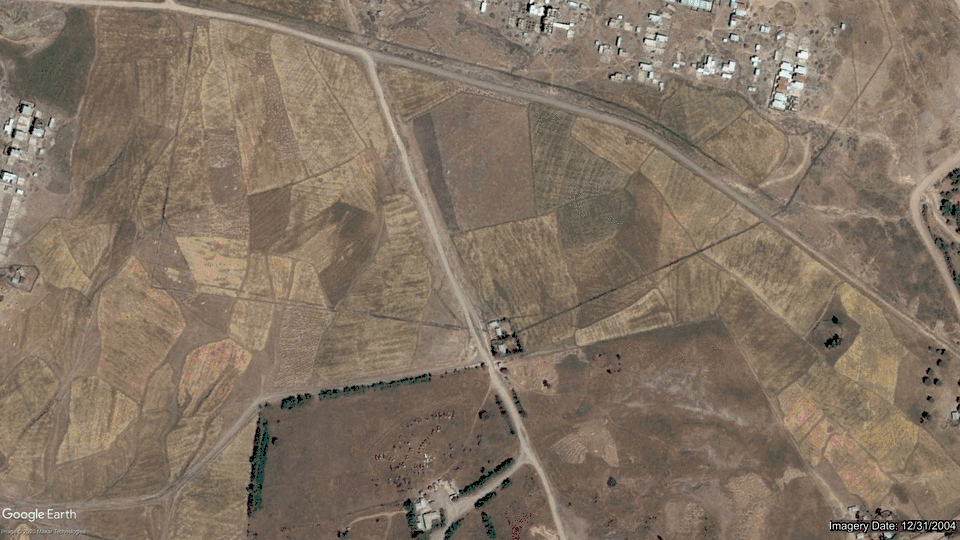
The need for urban housing
Urbanization is a recent and rapidly accelerating phenomenon in Ethiopia. Ethiopia has the least urbanized population in Africa. As of 2018, 80 percent of the population was made up of rural, small-scale farmers whose cash came from selling produce at market in nearby towns. Most plows are drawn by ox.4 Only in the last several decades, since emerging from a dictatorship in the mid 1990s, has domestic industry drawn new generations to the city in search of economic opportunities. Today, GDP growth consistently outperforms the regional average.1 Growing agricultural exports like avocados and flowers are adding to the country’s staple export and domestic pastime—coffee. Moreover, GDP growth from manufacturing services is outpacing agriculture, forming the backbone of the government’s industrial development strategy which aims to use manufacturing as the main driver of growth, technological diffusion, and employment for the growing urban population.
Concurrent to this economic evolution is a demographic evolution towards urbanization. The urban population count has more than tripled since 1990 and is projected to nearly double again before 2035.5 The critical need for planned housing and urban infrastructure to accommodate this population growth is compounded by an absence of formal and affordable housing options.
New arrivals to the city, especially job seekers without capital, turn to informal housing settlements. These informal settlements are low-density, tightly woven single-story structures with cramped interiors. As a result, when they absorb growth, they spread horizontally and strain access to utilities like water and electricity. Ultimately, only public planning can accommodate the transition, by fortifying utilities access, building up regional cities, and spurring the construction of vertically-dense affordable housing in the capital.
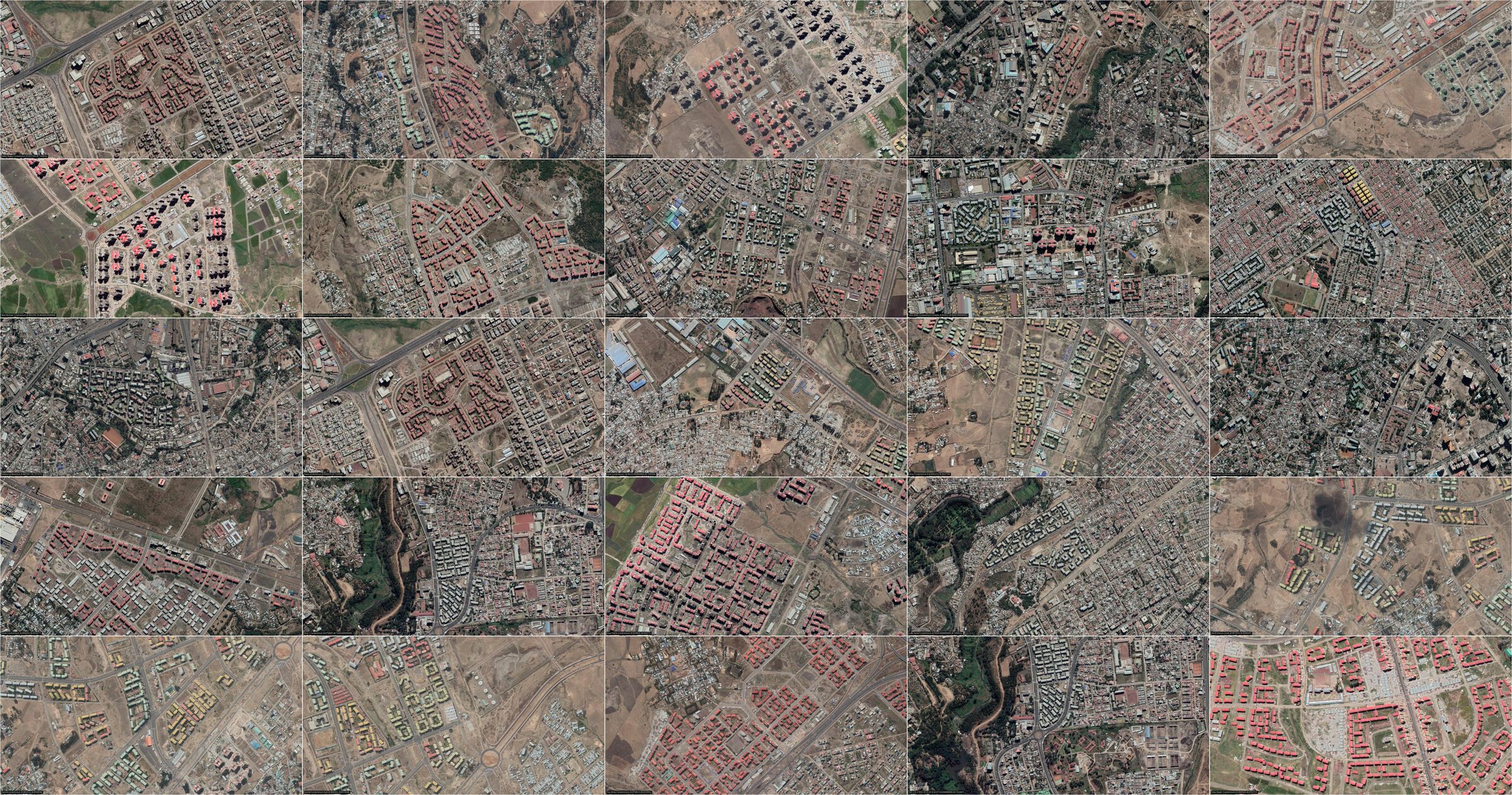
A departure from the Washington consensus
The Ethiopian government is taking a very hands-on approach to the housing sector, in a way that lands squarely outside the “Washington Consensus.”6 The Ethiopian federal and municipal governments are investing in public provisioning2 by directly administering and planning the unit design and site selection, contracting for construction, distributing units to final beneficiaries, and subsidizing mortgages through public banks.
Ethiopia’s model of direct investment, subsidies, and small-scale public-private partnerships departs from how most nations have pursued large-scale housing development. Over sixteen governments, including seven in sub-Saharan Africa, have taken on multi-billion-dollar urban housing projects in the past two decades. The most common approach pursues privatization, decentralization, and reductions in government spending. The World Bank and the International Monetary Fund require recipient nations to impose market-oriented structural adjustments in order to access emergency loans during fiscal crises.7 The Argentine housing experience is a case in point. In 1992, the government decentralized their primary public housing program, giving provincial governments more control over funding allocation; privatizing mortgage lending; and creating a secondary mortgage market that would enable banks to reinsure home mortgages without public involvement. The new market-based structures targeted mortgage products to higher-income households more than the existing public banks.89 Moreover, the emphasis on decentralization led to widely disparate experiences across provinces, including interest rates ranging between 0 percent and 12 percent. Ultimately, the Argentine reforms led to an increase of approximately 18,000 units over the previous decade and failed to meaningfully bring down unit costs for buyers. Their experiences have been replicated elsewhere in the global south.10
Ethiopia’s divergent approach is rooted in its complicated modern political development. As other African nations engaged in anticolonial struggle, leftist student movements in Ethiopia challenged the class distinctions and poverty of traditionally monarchical Ethiopia.3 The Dergue regime took power in 1974 through a coup and turned quickly into a despotic military dictatorship, brutally eradicating the civilian left.3 During its time in power, the Dergue seized private property, under the guise of radical equality.3 In a heavily agrarian society, land signifies socio-economic status, traditionally through ownership and today through farming and rental housing. The Dergue’s seizure of both rural and urban land ownership in the name of the peasantry marks a radical shift. Federal ownership of land remains the law in Ethiopia, with all home ownership occurring under a long-term lease of up to 99 years. These policies enabled the massive scale of public intervention in the housing market.
The Ethiopian People’s Revolutionary Democratic Front, which took power from the Dergue in the 1970s, was an ethnic guerilla insurgency, with ties to the civilian left ideology as a primary claim to legitimacy, alongside a campaign for divisive and violent ethnic-minority rule.11 They set up public health services as they claimed power over territories and studied Leninism and microeconomics from books “bound in goatskin” at the base camp.5 Leftist ideology remained a primary source of legitimacy for post-monarchical government authority, even after its turn from the Soviet-aligned junta regime.12
Today, some ideological threads like federal land ownership remain consistent with the government’s roots, while the values, structure, and constituents have shifted, including its basis in ethno-regional coalition. In 2019 this change was signaled by its name change from the “Ethiopian People’s Revolutionary Democratic Front” to “The Prosperity Party”.7 Today the party also seeks to enter the World Trade Organization for the first time, with negotiations stalled but originally projected to be completed in 2021.12
The administration has increasingly engaged in state-sponsored business ventures, most notably the construction of industrial parks, which function as self-contained manufacturing sites with their own public services. International businesses receive special tax incentives to locate there, including the elimination of import tariffs on capital goods and a five-year abatement of income tax. Multinational corporations, a majority of which are manufacturers, largely of garments8, are drawn to a combination of cheap wages and tax incentives. The Ethiopian government has also devalued its own currency to sweeten the deal for foreign exporters. This policy hurts labor-earners for whom food and housing prices outpace average growth in wages.9 Internationally, the industrial parks have been under fire for their poverty-level wages of $30 per month, which play a role in their 100 percent turnover rates.1011
This shift from state-directed economic activity to one of development marked by foreign direct investment and multinational capitalism is far from complete. Ethiopia sits at an ideological crossroads of the privatization of state-owned enterprises and assets, including selling off shares of its prized Ethiopian Airlines, or its current state-controlled path. Its policies vary by industrial sector, for example, the government has called for heavy state investment in nascent pharmaceutical manufacturing and biotech industries, but also highlights the opportunity that exploiting low local wages can afford to foreign investors.13(p18) Critics of the party argue that shifts in development strategy will be driven not by ideological commitment but by the route that best delivers power to party leaders.14 At the same time, the government has managed to invest and scale projects that serve the broader public, such as the urban light rail system and the massive state-funded housing program we examine here.
Planning and Implementation of the Integrated Housing and Development Program
In the 1990s and early 2000s, the government made efforts to address affordable urban housing by encouraging rural migrants to move to secondary cities, hoping to curb migration to Addis Ababa, and designing market-oriented housing programs that offered private developers an array of subsidies to construct new housing in the capital. These efforts had minimal impact13, their next would be far more direct.
In 1999 the Ministry of Federal Affairs of Ethiopia began collaborating with the state-run German development agency (German Technical cooperation, GTZ) to develop cheap and efficient construction technologies through the “Low-Cost Housing” (LCH) program.14 Over a three-year period, they prototyped and tested simple technology for low-cost construction, and achieved a 40 percent reduction in construction costs and 30 percent reduction in waste. They used a modular architectural system, with hollow concrete blocks that are cheaper and easier to handle than standard concrete masonry units, prefabricated elements that eliminate the need for formwork, and a resilient foundation system that works with all soil types.
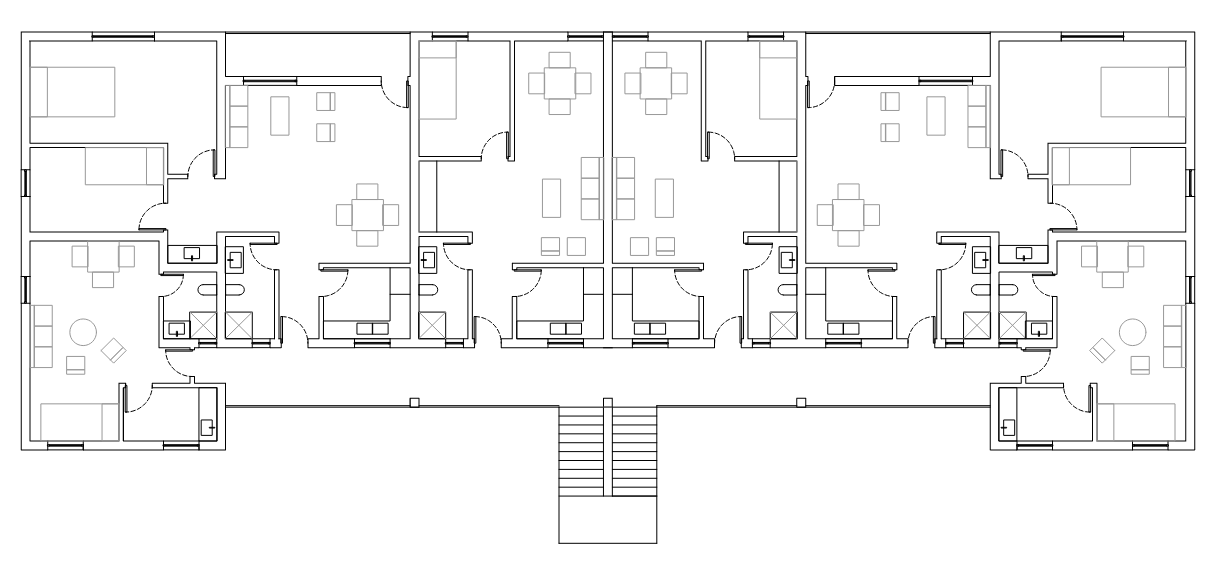
In 2004, a pilot project was completed in Bole Gerji, near the city's commercial districts,15 consisting of 696 housing units in 28 four-to-seven story buildings. The units emphasized efficiency, modernity, and scalability with modern kitchens and fixed room divisions. They were built for less than 900 Ethiopian Birr per square meter, in line with estimates developed during LCH research, which established a proof of concept. While the Bole-Gerji pilot was under construction, a master plan for twenty more sites containing 20,000 units was unveiled. Soon after, the city government established the Addis Ababa Housing Development Project Office and produced the Addis Ababa Grand Housing Plan (AAGHP) for 66,000 more units across 100 sites. The AAGHP was one arm of a larger Sustainable Development and Poverty Reduction Program, the first in a series of comprehensive economic development plans.
In total, the Grand Housing Plan aimed to reduce a 300,000-unit housing backlog, replace 50 percent of kebele housing (public, usually informal housing on land seized in revolution), and help residents acclimate to their new, modern dwellings. This last priority presages a design flaw: planners expected to change lifestyles, rather than designing for local needs. But as a program of broad-based asset building and improvement of housing conditions, the AAGHP, later rolled into a national initiative, the Integrated Housing and Development Program16 accomplished an incredible amount at an ambitious scale.
The earliest condominium sites were filled with architects, lawyers, and government contractors, before condominium owners began to be selected by public lottery as they are now.18 We heard the criticism about the lack of transparency in unit allocation of early project sites and, upon visiting in 2019, we observed the relatively well-landscaped public spaces, well-maintained buildings, and active street life in these earliest projects. Today, condominium ownership is selected at random. Lottery applicants specify the size of apartment needed, between one and three bedrooms, and the level of subsidy needed, up to 90 percent for the lowest-income and 80 or 60 percent for mid-income households.
In order to claim a unit after winning the lottery, applicants must be able to meet the down payment. In 2019, households receiving an 80 percent subsidy needed $2,300 USD for a one-bedroom apartment, $3,700 for a two-bedroom and $5,700 for a three bedroom.17 One resident shared that they used iqub funds, a community-based savings scheme to meet their down payment.








Unplanned Residences
Entering into one informal neighborhood down a hill from Addis Ababa’s Bole-Gerji district, we found a large church, St Michael’s, and a labyrinth of narrow cobblestoned streets teeming women carrying groceries and children leaving a nearby school enthralled in some kind of game involving a stick and a string. They tried to teach us and teased us—good heartedly—for failing miserably. Entering the condominium sites, life was relatively subdued.
Condominium life
Condominium dwellings usher in a substantial departure from the Ethiopian way of life—this fact has been reported by local faculty conducting research in urban policy and architecture, leadership in local Non-Governmental Organizations, and has been echoed by a number of city residents in conversation.
Firstly, condominium buildings are relatively dense. Units come in one of several typologies classified by height G+ 5 (ground plus 5 stories), G+7, and G + 10. Prior to the IHDP by contrast, up to 95 percent of housing was single-story. Next, households tended to occupy shared compounds. A handful of households, often inhabited by extended family members, would each have their own home behind a single street-facing gate. Shared outdoor space is the site of Ethiopian food preparation—roasting onions, drying peppers, and grinding spices and coffee. Additionally, larger communities were traditionally economically integrated. Small informal households spring up alongside formal homes. Urban planners remarked that economic integration can generate valuable social bonds; for example, poorer informal households often sell petty trade items (vegetables, cell-phone minutes) to their wealthy and poor neighbors alike.
In a very practical sense, the vertical condo design precludes some of these avenues for social ties.18 The apartments lack a semi-private outdoor space for neighborly bonding and traditional food preparation. Residents note that the design of the condominium is isolating, “Perhaps if we were people who went to the store, bought ingredients, then cooked ourselves dinner on a stove, this would make sense,” explains an NGO branch chief named Masresha. “But no, we roast beans and send our child to call the neighbors over for coffee, then we meet at one of theirs for lunch and the other for dinner.”
Whereas extended families tended to settle nearby one another in informal and low-density housing arrangements, in the condominiums, residents do not know one another before moving in. Units are allocated by lottery for fairness. The lottery system, however, dissolves the tight social bonds developed among previous neighbors who are scattered throughout the city. One’s loyal petty trade customers, for example, may now head to the large supermarket, which can afford to rent the bottom-floor commercial space of the newly built apartment block.







Life in the Condos
The Basha Wolde condominiums, where we stayed during this study, were relatively small, with only four stories and a handful of buildings and were relatively well-connected to the arat kilo neighborhood, rather than occupying space at the outskirts. Still, we observed little street life. Once we saw a woman grinding coffee by hand outside in the parking lot. She reported that the banging would otherwise bother her downstairs neighbors.
The program also segregates economic classes. Beyond the loss of petty trade businesses, low-income households begin to occupy distinct apartment buildings. Condo ownership is random, but a household’s subsidy level determines the building to which they are assigned, so that the 90 percent subsidy buildings are separate from the 80 and 60 percent buildings. Construction of several large-scale condominiums on the outskirts of the city contribute a geo-spatial element to this economic segregation.19
Further driving stratification, condo owners are collectively responsible for maintaining their buildings and common spaces, leading some to invest more heavily in landscape architecture and civil engineering. More than income, knowledge and organization has been an important factor. One condo board member, himself an architect, reports that his condo community charges only one US dollar (47 eth Birr) per member per month, plus .25 USD (five Ethiopian Birr)) to each non-resident car that enters. They use the funds to staff a library, street sweeping team, security station, and to maintain gardens and public spaces. The sum is far from prohibitive for other condos, but not every condo has architects and civil engineers among their board members like the earliest, pre-public lottery project sites.
Finally, the utilities infrastructure continues to pose a challenge. Water often fails to reach the top floor, and power interruptions mean that residents are unable to use elevators. Many residents maintain tanks or carry water up flights of stairs. For the aged or poor, these tasks might be impossible. Transportation costs and commute times remain high for those on the periphery. Despite efforts to develop and connect the periphery, the city center remains the primary center for employment and community activity. A new urban light-rail system connects the city east to west, which helps to alleviate traffic and commutes. We met one new condo owner and resident working in a leather goods shop in Addis Ababa’s “stadium” neighborhood. She, her husband, and their son live in the CMC neighborhood on the city’s east side and she takes the light rail to and from work every day. For her, the city’s development has been qonjo, lovely. Still the light rail system leaves the other city quadrants unconnected until further development.
High and rising construction costs over the program’s duration have meant some of the city’s poorest residents cannot afford units, even at a 90 percent subsidy.19 Others sell their units after a mandatory five-year waiting period aimed at encouraging longer-term ownership. The system does enable poor Ethiopian households to receive a passive income and build housing wealth, an important outcome in its own right, but even meeting the down payment does not secure long-term ownership. Many residents do not have the ongoing income to make mortgage payments, and thus rent out the unit. Approximately 70 percent of the units are rented out by the owners who live elsewhere; some are used as a source of income, and others as mortgage payments to avoid foreclosure and continue holding the appreciating asset. One renter reported that her landlady seemed to be slowly adjusting to the new role, sometimes stopping in to check on them, once just to use the bathroom. The renter conceded that a landlord really shouldn’t be doing that, but that the woman was proud of her new asset, popping by to ask “how’s my apartment doing?”
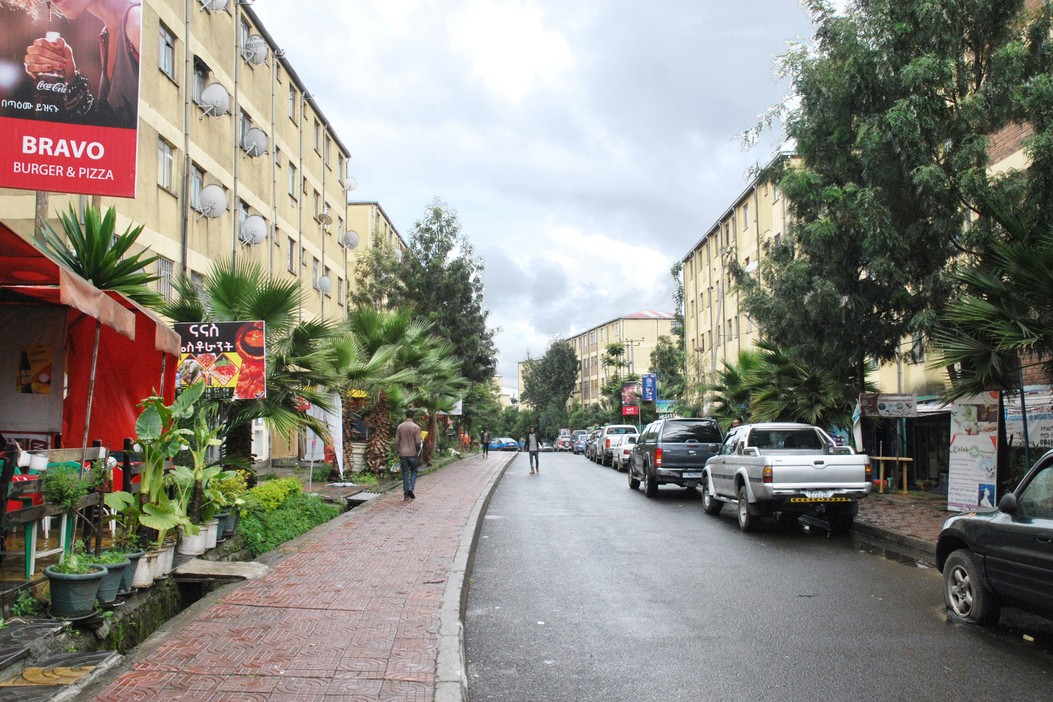
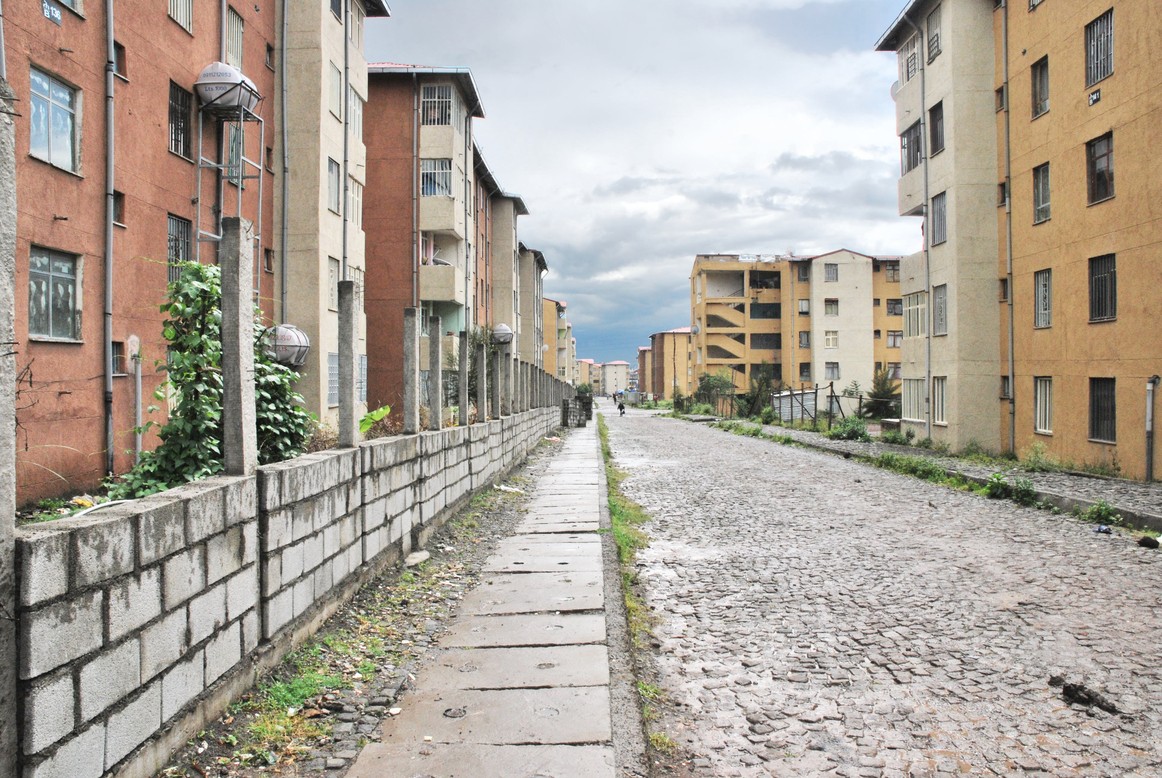
The future
After a decade of remarkable growth, the architects, planners, and resident activists of Addis Ababa are reflecting on the process of urbanization underway. Their ideas evidence a tradition of locally generated solutions to social and material challenges.
Continued economic and population growth at this scale has stretched the construction sector to capacity. The IHDP imports a remarkable 75 percent of materials used in building construction, which is increasingly difficult to finance after currency devaluations. Preliminary studies explore whether locally sourced materials may one day be able to serve as a replacement. Ethiopians traditionally have built structures using organic materials available in the natural environment. An alternative building material could alleviate the import dependence of the construction sector and lead to lower cost and thus more widely available units.
Residents seemed to agree that the principles of building management and administration developed in more successful communities should be shared widely, but government support would be needed to facilitate that process. The fees were reasonable, anyone can afford $40 birr a month, one resident shared, but a housing association would need guidance on which programs to implement with their collections and how to have adequate transparency to generate buy-in given the absence of neighborly ties.
Future developments could be more deliberate in keeping neighborhoods and families intact, bringing new buildings to existing communities, built in place of their existing single-story neighborhoods. Area residents could be temporarily relocated, with the group still intact, for a period of up to five years, and then brought back to their own neighborhood once construction is complete. This would maintain social ties while providing access to the more finished buildings and could avoid the economic segregation that results from building low-cost apartments at the city’s periphery. However, it would also require significant planning and investment in the buildings that would house these families during construction. The literature appears to reach a consensus that participatory governance is lacking but critical.2021
Finally, the next phase can redesign the very concept of the condominium to make room for the Ethiopian way of life, designating a semi-private shared outdoor space for extended families to take part in the work and play.22 For the designers and planners of the nation, the next phase of urban development is one of designing and building a contextually derived, community-oriented and socially engaged manifestation of Ethiopian urbanism.




Khaliya
"Our design provides a structural framework that allows for adaptability, room for growth and freedom of choice for the residents, on a larger scale by using a system of modules in clustered or hive-like configurations, and a smaller scale with a flexible floor plan and an adaptable, scaffolding-like structure. The housing modules are elevated above ground level, not only providing security and privacy for the residents, but also transparency above and below for the overall community. The material and structural concept assert for longevity and sustainability - in construction, in space and not in disregard of affordability."